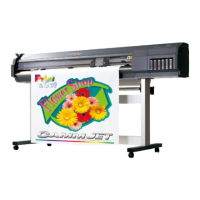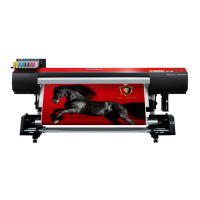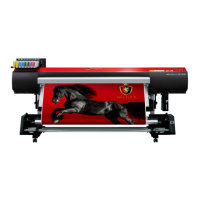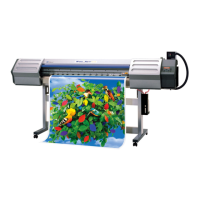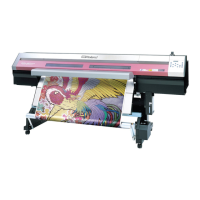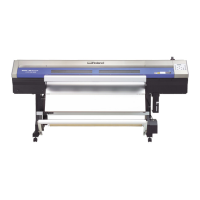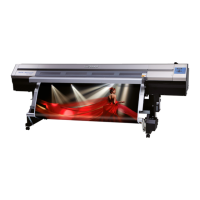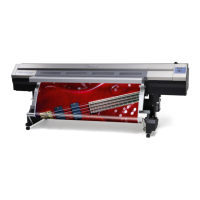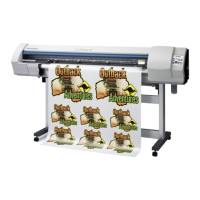123
6
FAQ
Media Feeding Is Not Smooth
A variety of problems can occur if the media feeding is not smooth. This can cause such prob-
lems as poor printing quality, contact with the media by the print heads, misaligned positioning,
or media jams. Take action as follows.
Media Wrinkles or Shrinks
Is the media loaded and set up straight and securely?
Feeding is not smooth when the media is not straight or is tensioned unevenly on the left and right. Reload
the media.
P. 32, "Setup of Media ([MEDIA SETTING] Menu)"
Was loaded media allowed to stand for some time?
Media may shrink or wrinkle if it is heated for an extended time. When printing ends, switch o the sub power
or remove the media.
Are the media clamps attached?
When you are performing printing, be sure to attach the media clamps.
Was the media loaded while the print heater was hot?
Loading media after the print heater has warmed up causes the temperature of the media to rise suddenly,
which may cause the media to shrink or wrinkle during printing. Before loading media, switch o the sub
power and allow the platen to cool.
P. 85, "Fully Utilizing the Media Heating System"
Are the media heating system temperatures too high?
Set the temperatures to suitable values for the type of media.
P. 85, "Fully Utilizing the Media Heating System"
Is the temperature of the room too low?
Use the machine in an environment with an ambient temperature of 20 to 32°C (68 to 90°F). If the machine is
used at an ambient temperature of less than 20°C (68°F), then depending on the type or width of the media,
wrinkling or temperature-caused unevenness may occur. If this happens, try lowering the temperature of the
media heating system by about 2°C (36°F). To obtain stable printing results, however, use the machine in an
environment with an ambient temperature of 20 to 32 °C (68 to 90 °F).
Is the humidity of the room too high?
Use the machine in an environment with a humidity of 35 to 80 %RH (no condensation).
Is the media sagging?
If sagging media is used, it may come out wrinkled.

